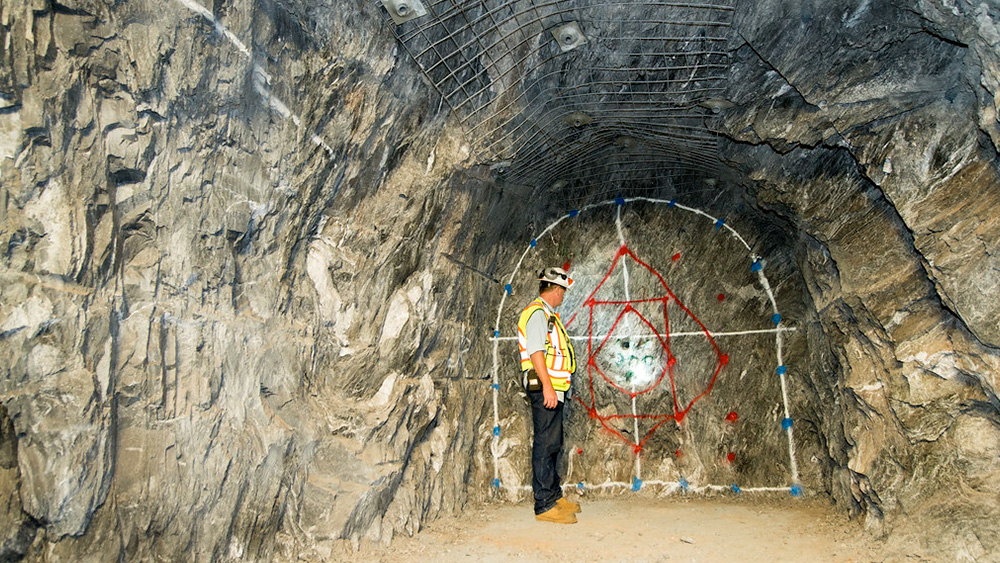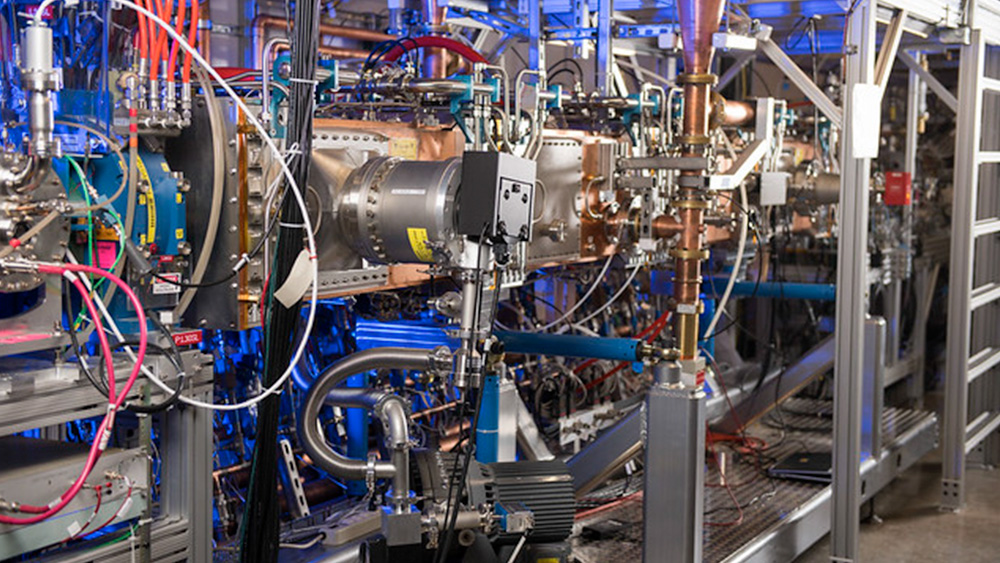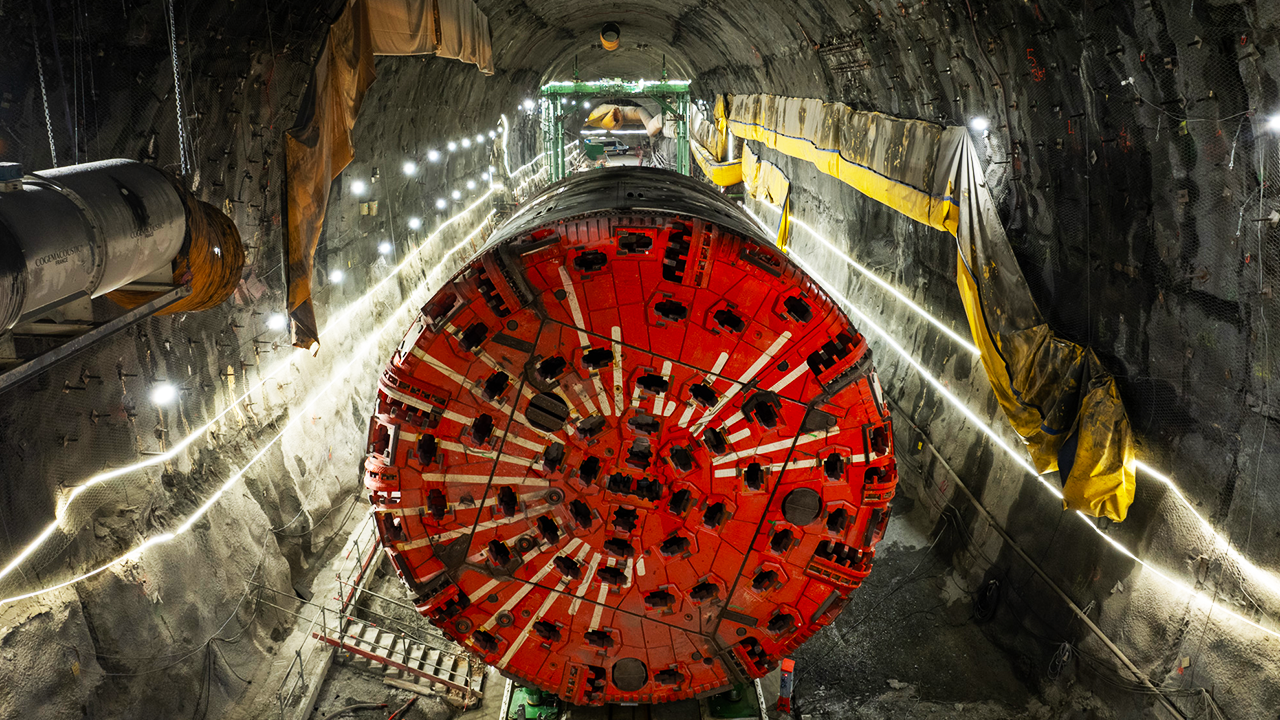Why America is Hollowing Out a Mountain
- Youtube Views 1,519,110 VIDEO VIEWS
Video narrated and hosted by Fred Mills. This video contains paid promotion for AMD Ryzen AI Pro.
A vast series of caverns is being constructed in a former gold mine under the town of Lead, South Dakota. When completed, they will be used to look for something far more elusive than rare metals. When complete, the gigantic facility will make up half of one of the biggest science experiments in US history: the Deep Underground Neutrino Experiment, or DUNE.
Consisting of two facilities spread over two states and buried over a kilometre underground, DUNE is one of the biggest science experiments ever constructed in US history.
The purpose of DUNE? None other than to answer the most fundamental mysteries of the universe. Highest on that list of puzzles is the simple question of why anything exists? In other words, why do we have a universe full of stars, planets, animals etc. instead of an empty void?

Above: One of the caverns of DUNE’s far detector. Image courtesy of Ryan Postel, Fermilab.
First we have to understand two substances: matter and anti-matter. Matter is everything you see around you, anything that takes up space is made of matter. Anti-matter has very similar properties but the other way around; think of it as the negative of a photograph. When these two substances touch, they transform into energy.
But where do they come from? Just after the big bang, the universe created huge amounts of matter and anti-matter. According to everything we understand about physics, the universe should have created equal amounts of matter and anti-matter. Had this happened, both these substances would have reacted with each other, turning into energy and leaving the universe highly charged but empty.
Instead, for every three billion particles of anti matter, three billion and one particles of matter were created. So, the three billions collided, cancelling each other out and that left over one is what created just about everything in the universe.
Why there was that extra one in every three billion particles of matter is the question that’s had scientists scratching their heads for decades. But they’re hoping the answer might lie in tiny elementary particles known as neutrinos.
Studying these particles however is extremely difficult. Neutrinos are one of the smallest known particles in the universe and they interact with almost nothing. A neutrino could fly through five lightyears of lead before it has a 50 percent chance of being stopped.
It’s this elusiveness that has resulted in the enormous construction job taking place across two US states. When completed, these separate installations will become known as the Long Baseline Neutrino Detector Facility.
To explain further, let’s take a look at how DUNE will work. The experiment begins at the Fermilab campus just outside of Illinois, where work is underway on PIP II: the world’s most powerful neutrino particle accelerator.
This will accelerate protons close to the speed of light before firing them into a target, producing a focused beam of neutrinos. A large grassy mound will angle the beam down into the Earth, towards two sets of detectors.
The first, the near detector, is only about 600-metres away. After that, the beam continues at close to the speed of light for another 1,286 kilometres towards its second target, the far detector.
While the far detector is breathtaking in size, the near detector is much smaller, about 12 metres long and 3 metres high. This extreme difference in scale is due to the way the PIP-II particle beam spreads over distance.
Imagine shining a torch at a piece of paper held just in front of you. All the light will hit the paper because the distance is so small. Stand back a few metres however, and you’d need a much bigger piece of paper as the cone of light spreads over a further area.
The same effect happens with PIP-II. At the Fermilab campus, the beam of neutrinos is narrow enough to be captured by a facility a few metres wide. 1,300 kilometres away, however, that beam of protons becomes several kilometres wide, so to stand a chance of catching any neutrons, any facility built at this distance needs to be colossal.
Over in Lead, South Dakota, the far detector is being constructed in the former Homestake Gold Mine. When it closed in 2002, this had been the longest continuously operated gold mine in America, and by far the deepest.
Today it forms the Sanford Underground Research Facility, which provides spaces for a range of scientific experiments conducted by various institutions.
It’s here, at level 4,850, that the far detector is being built. The facility will comprise a series of three specially constructed caverns, each big enough to house the statue of liberty laid flat three times. At 1,475-metres underground, these are the biggest caverns ever constructed at this depth anywhere on earth.
Constructing these caverns, even in a facility designed for underground excavation, is far from straight forward. When the SURF team began work at the former mine, most of the existing equipment needed replacement or refurbishment.
The Ross Shaft, the entry and exit point for all people and equipment visiting the detector, features steel reinforcement to protect it from damage and to prevent collapse. Upon inspection though, all this steel had become corroded and would need to be replaced before any further construction could commence.
Starting in 2012, work began on painstakingly replacing the steel sets at 5-metre intervals down the entire 1,500 metre shaft.
With the headframe and shaft restored, attention then turned to transporting the heavy duty excavation equipment down to the rock face. The shaft is a rectangle measuring around four by seven metres, about the space taken up by two shipping containers.
While that might seem like plenty of space it’s shared by utility lines and the skip system, which brings up rubble from below. The area left for transporting equipment shrinks to about a fifth of the original size.
One of the biggest pieces of equipment used in the construction of the cavern was the drill jumbo, used in the drill and blast method of excavation. The jumbo consists of two hammer drills attached to a tractor body. The huge drills are supported by hydraulic jacks which maintain the drilling angle. As the jumbo’s progress, high pressure water is used to remove rubble and debris.

Above: A rock face being prepared for excavation. Image courtesy of Fermilab.
The jumbo drills a grid of approximately 100 holes in the rock face, around half of which are filled with explosives. When these are detonated, the empty holes provide fracture points which allow the explosion to clear out a controlled area of rock.
The surrounding rock is fairly stable, but lots of reinforcements are needed to stop the caverns from gradually closing back in on themselves. Once an area is completely excavated, giant rock bolts are inserted into rockface in a grid pattern, preventing any further movement in the rock.
Excavation on the caverns was completed in 2024, after 800,000 tonnes of rock had been excavated from the former mine. The caverns are currently being lined with shotcrete and concrete floors are being poured, ready for them to be fitted out as a high-tech laboratory.
The middle cavern is being equipped as a service facility, containing a substation as well as a liquid cooling system, to remove heat from the ground. The north and south caverns, meanwhile, are reserved for the neutrino detectors themselves.
At DUNE, four detector modules are being installed, each with slightly different technology to capture a slightly different aspect of neutrino behaviour. This is important because even with facilities such as LBNF we are unable to directly spot neutrinos, but we can monitor a lot of the things they do.
One reason neutrinos are so elusive is because the only thing they collide with is the nucleus of an atom. To put that into perspective, if an atom was the size of a football stadium, the nucleus would be the size of an orange.
As a result, these collisions don’t happen too often, but when they do a reaction occurs and parts of the nucleus fly off. It’s this reaction that DUNE is looking for.
It’s hoped the experiment will begin in 2032 but this estimate is likely to change. However, at some point, the PIP II accelerator will be turned on and the two detectors will begin their work as alternating beams of neutrinos and anti-matter neutrinos will be fired towards them.

Above: A detail of the PIP-II particle accelerator. Image courtesy of Fermilab.
What researchers are hoping to show is that the matter and anti-matter particles will behave slightly differently over the distance of the two detectors and that will indicate why the universe has a slight bias towards matter and ultimately why any of us exist.
Alternatively, the results could be completely different and all this could just lead us further down the rabbit hole of the mysteries of our universe. Either way, there’s more than just gold in them there hills.
Additional footage and images courtesy of SURF, Fermilab, CERN, University of Kamioka Observatory, ICRR, University of Tokyo, NHK Enterprises INC Legendary Pictures.
If you want a PC that works at the speed of light, check out the free Test Drive Program for the Ryzen AI Pro here.
We welcome you sharing our content to inspire others, but please be nice and play by our rules.








